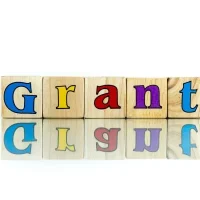Sustainable forestry and wildlife protection are critical components of environmental conservation that ensure the health of our planet for future generations. The importance of these practices cannot be overstated, as they play a vital role in maintaining biodiversity, regulating climate, and supporting local economies. Sustainable forestry involves managing forest resources in a way that meets current needs without compromising the ability of future generations to meet theirs.
This approach not only preserves the ecological balance but also provides livelihoods for communities that depend on forests for their survival. Wildlife protection is equally essential, as it safeguards the myriad species that inhabit our planet. The loss of biodiversity can lead to ecosystem collapse, which in turn affects human health, food security, and economic stability.
By protecting wildlife habitats and implementing sustainable practices, we can mitigate the impacts of climate change and preserve the natural resources that are crucial for human existence. Together, sustainable forestry and wildlife protection create a holistic approach to environmental stewardship, ensuring that both nature and humanity can thrive in harmony.
Identifying Potential Donors Interested in Sustainable Forestry and Wildlife Protection
Researching Potential Donors
Identifying potential donors who are passionate about sustainable forestry and wildlife protection is a crucial step in securing funding for your projects. Start by looking for individuals, corporations, and foundations that have a history of supporting environmental initiatives. Many philanthropic organizations focus specifically on conservation efforts, so it’s essential to align your project goals with their mission statements.
Understanding Funding Priorities
Researching past grants awarded by these organizations can provide insight into their funding priorities and help you tailor your approach. This information can help you understand what types of projects they are likely to support and what specific aspects of sustainable forestry and wildlife protection they are most interested in.
Building a Network of Contacts
Networking within the environmental sector can also yield valuable leads on potential donors. Attend conferences, workshops, and seminars focused on sustainability and conservation to connect with like-minded individuals and organizations. Engaging in conversations about your work can spark interest and lead to fruitful partnerships. Additionally, consider leveraging social media platforms to reach out to potential donors who share your commitment to sustainable forestry and wildlife protection. By building a robust network of contacts, you increase your chances of finding supporters who are eager to invest in your initiatives.
Researching Donor Organizations and Foundations
Once you have identified potential donors, the next step is to conduct thorough research on their organizations and foundations. Understanding their funding criteria, application processes, and areas of interest will help you craft a proposal that resonates with them. Many foundations publish annual reports or grant guidelines that outline their priorities and the types of projects they typically fund.
Take the time to read through these documents to gain insights into what they value most in a proposal. In addition to reviewing formal documents, consider exploring the donor’s online presence. Social media profiles, blogs, and newsletters can provide a wealth of information about their recent activities and interests.
Look for any specific campaigns or initiatives they have launched related to sustainable forestry or wildlife protection. This knowledge will not only inform your proposal but also demonstrate your genuine interest in their work when you approach them for funding.
Crafting a Compelling Proposal for Sustainable Forestry and Wildlife Protection Projects
A well-crafted proposal is essential for capturing the attention of potential donors. Start by clearly articulating the problem your project aims to address within the realm of sustainable forestry or wildlife protection. Use data and real-world examples to illustrate the urgency of the issue and the potential impact of your project.
Be specific about your goals, objectives, and the strategies you plan to implement to achieve them. Moreover, it’s crucial to outline how your project aligns with the donor’s mission and funding priorities. Highlight any collaborative efforts with local communities or other organizations that demonstrate a commitment to sustainability.
Include a detailed budget that outlines how funds will be allocated, ensuring transparency and accountability. Finally, emphasize the long-term benefits of your project, not only for the environment but also for local communities and economies. A compelling proposal should tell a story that resonates with donors on both an emotional and intellectual level.
Building Relationships with Potential Donors
Building relationships with potential donors is an ongoing process that extends beyond submitting a proposal. Establishing trust and rapport is key to securing funding for your projects. Start by reaching out with personalized communication that expresses your admiration for their work in sustainable forestry or wildlife protection.
Share updates about your organization’s initiatives and invite them to events or workshops where they can learn more about your mission. Once you have established initial contact, maintain regular communication to keep them informed about your progress and successes. Sending newsletters or updates about your projects can help keep your organization on their radar.
Additionally, consider inviting them to visit project sites or participate in volunteer opportunities. These experiences can deepen their connection to your cause and foster a sense of ownership over the impact of their contributions.
Leveraging Networking and Partnerships in the Sustainable Forestry and Wildlife Protection Community
Unlocking New Opportunities through Networking
Networking within the sustainable forestry and wildlife protection community can open doors to new funding opportunities and collaborations. Engage with other NGOs, government agencies, and academic institutions that share similar goals. By forming partnerships, you can pool resources, share knowledge, and amplify your impact on conservation efforts.
Strengthening Your Funding Prospects
Collaborative projects often attract more attention from donors who appreciate the strength of collective action. Participating in coalitions or alliances focused on environmental issues can also enhance your visibility within the donor community. These groups often have established relationships with funders and can provide valuable insights into best practices for securing grants.
Staying Ahead of the Curve
Additionally, being part of a larger network allows you to stay informed about emerging trends in sustainable forestry and wildlife protection, enabling you to adapt your strategies accordingly.
Utilizing Online Platforms and Resources for Donor Research
In today’s digital age, numerous online platforms can assist you in researching potential donors for sustainable forestry and wildlife protection projects. Websites like Guidestar, Foundation Center, and GrantStation offer comprehensive databases of foundations, their funding priorities, and past grant recipients. These resources can help you identify organizations that align with your mission and provide insights into their application processes.
Social media platforms such as LinkedIn can also be valuable tools for donor research. Follow organizations that focus on environmental conservation to stay updated on their activities and funding opportunities. Engaging with their content can help you build connections with key decision-makers within these organizations.
Additionally, consider joining online forums or groups dedicated to sustainable development where you can share experiences and learn from others in the field.
Navigating the Grant Application Process for Sustainable Forestry and Wildlife Protection Projects
Navigating the grant application process can be daunting, but understanding the steps involved can significantly increase your chances of success. Begin by carefully reviewing the application guidelines provided by the donor organization. Pay close attention to deadlines, required documentation, and specific formatting instructions to ensure compliance.
Once you have submitted your application, be prepared for follow-up questions or requests for additional information from the donor organization. Maintaining open lines of communication during this phase is crucial; promptly respond to inquiries to demonstrate your commitment to transparency and collaboration. If awarded a grant, be sure to fulfill all reporting requirements diligently, as this will lay the groundwork for future funding opportunities.
In conclusion, securing funding for sustainable forestry and wildlife protection projects requires a strategic approach that encompasses understanding donor interests, crafting compelling proposals, building relationships, leveraging networks, utilizing online resources, and navigating grant applications effectively. By implementing these actionable tips and strategies, NGO professionals can enhance their chances of success in obtaining vital support for their conservation efforts.








































